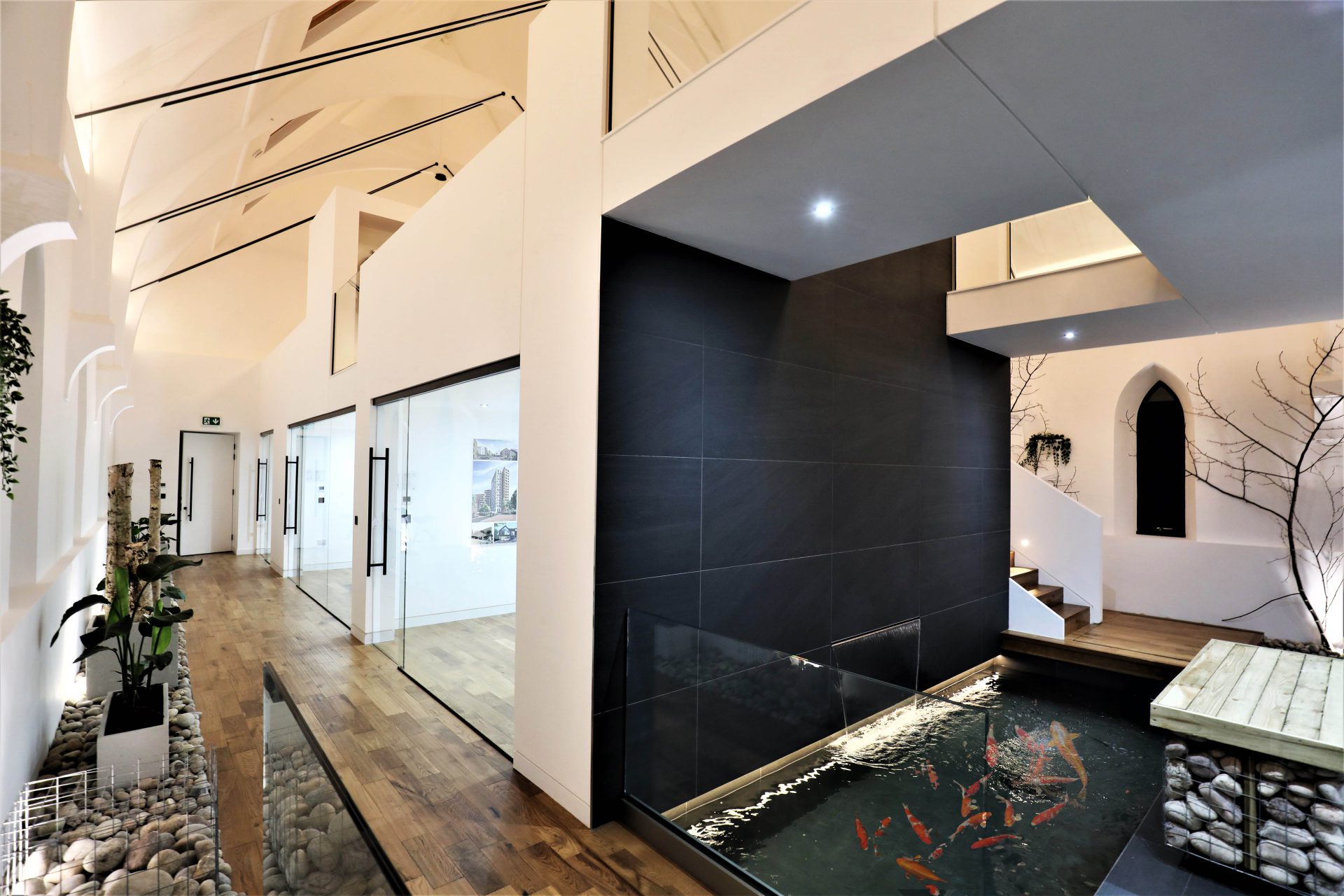Originally built in 1861 this former church closed its doors to worship in 2009 and occupying the vacated volume, it has been our own NE40 Studios since then. We always did however have plans to create something special within the space and COVID lockdown 2020-21 provided us with an ideal opportunity for us to see our plans become reality. Our own Project REINVENTION seeks to sustainably retain a valuable community and heritage asset, further repurpose it and through design, address topical issues of Climate Change, Health & Wellbeing and Covid.
The existing building has been restored and encapsulates a new kit of parts which have been theatrically placed within it to provide flexible architecture, artist studios and future living, set within an internal garden of plants and tree installations which are accessed from bridges over an internal pond.
The internal gardens seek to offset some of the carbon footprint of the building while the pond utilises recycled water and the mass fabric of the existing naturally ventilated space all respond to the RIBA 2030 Climate Challenge.
The pond dramatically reveals itself upon entry through the original church doors and sets the tone of what this place is about – a revealing sensory journey of discovery, a place in which to come, instil and enjoy creative working and future living.
The senses are evoked through the sound of water, the smell of eucalyptus, the feel of old and new materials harmoniously residing together and visually, through the volume of the retained light and airy structure and the drama of the new architecture.
Art and Architecture come together through the centrally located sculptural kit of parts which is divided into horizontal and vertical geometric forms between glazed screens, resembling a Mondrian painting. Colour is then controlled through natural materials, the green gardens, and fish within the pond.
NE40 Studios is a place which has been reinvented. The project is a fine example of repurposing a redundant building through a sustainable architectural approach and could inform a strategy which could be deployed on thousands of similar buildings throughout the UK.









